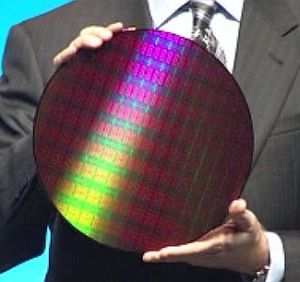Intel Dominated But AMD Gained In 2011 Chip Market, Says IDC

Though AMD saw strong growth in its mobile chip business in 2011, Intel held over 80 percent of the worldwide chip market
Advanced Micro Devices (AMD) got a boost from its Fusion processors in 2011, seeing gains in market share for mobile chips and a slight bump in overall processor share, according to market research firm IDC.
However, Intel only showed a slight decline during a year that saw microprocessor revenues jump 13.2 percent, to more than $41 billion (£26bn). That, in part, was helped by the fact that systems makers were willing to shell out more for the chips than they paid in 2010, according to Shane Rau, director of PC semiconductor research at IDC.
Moderate increases
“The average selling price (ASP) that OEMs pay for PC microprocessors rose more than nine [percent] in 2011, making 2011 the second consecutive year of notable ASP increases,” Rau said in a statement.
Processor unit shipments grew 3.6 percent from 2010 to 2011, according to IDC.
Last year, Intel held 80.1 percent of the worldwide unit market, a slight drop of 0.6 percent over 2010, according to IDC. AMD’s market share stood at 19.7 percent, a bump of 0.7 percent. Via Technologies’ share was 0.2 percent, a drop of 0.1 percent.
AMD was bolstered, in particular, by its performance in the mobile PC chip space, where its share grew to 16 percent, a 2.7 percent increase. AMD rolled out its much-anticipated Fusion accelerated processing units (APUs) during the Consumer Electronics Show in January 2011, and focused much of its efforts during the year on its mobile chips, including the popular Llano offerings for mainstream PCs.
At the same time, Intel unveiled its Sandy Bridge architecture, which like the Fusion APUs offers integrated graphics technology. Its share in the mobile chip space fell 2.6 percent, to 83.3 percent.
However, Intel saw its dominance in the server space grow 1.5 percent, to 94.5 percent, despite the delay in the release of its Xeon E5 processors. AMD’s share dropped 1.5 percent to 5.5 percent. AMD, after a delay, launched its Opteron 6200 Interlagos server chips in November 2011. The devices offer up to 16 cores, and provide performance and energy-efficiency improvements.
AMD’s Bulldozer architecture, which appeared in Interlagos and Opteron 4200 Valencia processors, was also dogged by some disappointing reviews when they hit the market.
Intel also grew its share of the desktop chip space, seeing a 1.7 percent jump to 73.8 percent. AMD’s 26 percent share was a loss of 1.6 percent.
In the fourth quarter of 2011, microprocessor revenues hit $10.9 billion (£6.9bn), up 14.2 percent over the same period in 2010. Intel held 80.3 percent of the overall market in the fourth quarter, followed by AMD with 19.6 percent and Via with 0.1 percent.
IDC analysts expect microprocessor shipments in 2012 to grow 5.1 percent, adding that the effects that massive floods in Thailand had on the hard-disk-drive (HDD) market is fading. The HDD shortage forced vendors in the PC supply chain to lower inventories and reduce the number of chips they were buying. By the end of 2011, analysts reduced their forecasts for everything from PCs to semiconductors, and Intel lowered its first-quarter financial projections.
However, IDC’s report said the HDD shortage will not hamper PC shipments this year, and the analysts said that, given the improvements in the US job market and relative financial stability in the European Union, they may raise their projections after the current quarter ends.
